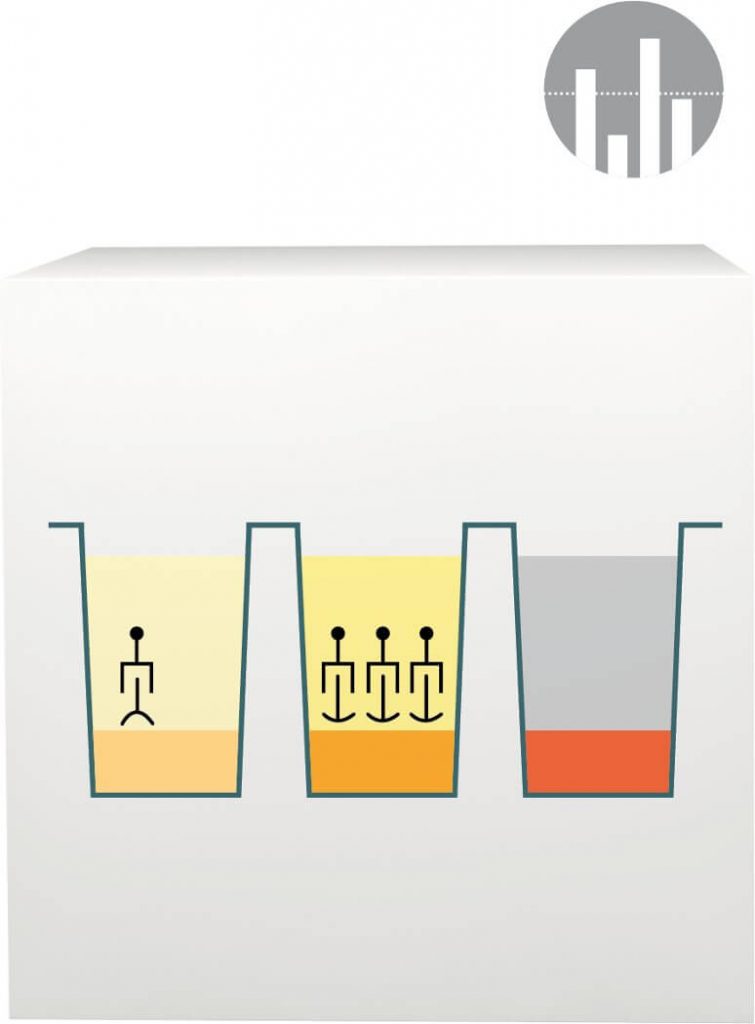ImuPro laboratory procedure
From beginning to end: production of ELISA test plates, processing of your sample and creation of your test results
Below you can see the complex analysis steps of the specific IgG test in detail, from the production of the ELISA test plates to the processing of your sample, and the detailed report documents.
Production of the ImuPro test plates
We receive a shipment of empty micro titer plates.
270 foodstuffs are processed and the proteins are extracted. It is a difficult task to ensure that the food extracts accurately reflect the nature of the proteins which are involved in the type III allergy reaction.
These 270 different protein solutions (foods) are applied to the empty plates. It is important that each allergen extract is poured into a separate well on the plate. We do not pool the allergen extract; if there were 2, 3 or even 4 foods in the solution applied to each well, then how would we know which caused the reaction? This would limit the degree to which your diet has to be restricted.
After this process, the plates are sent to a specialised diagnostic laboratory. They are now ready for your sample.
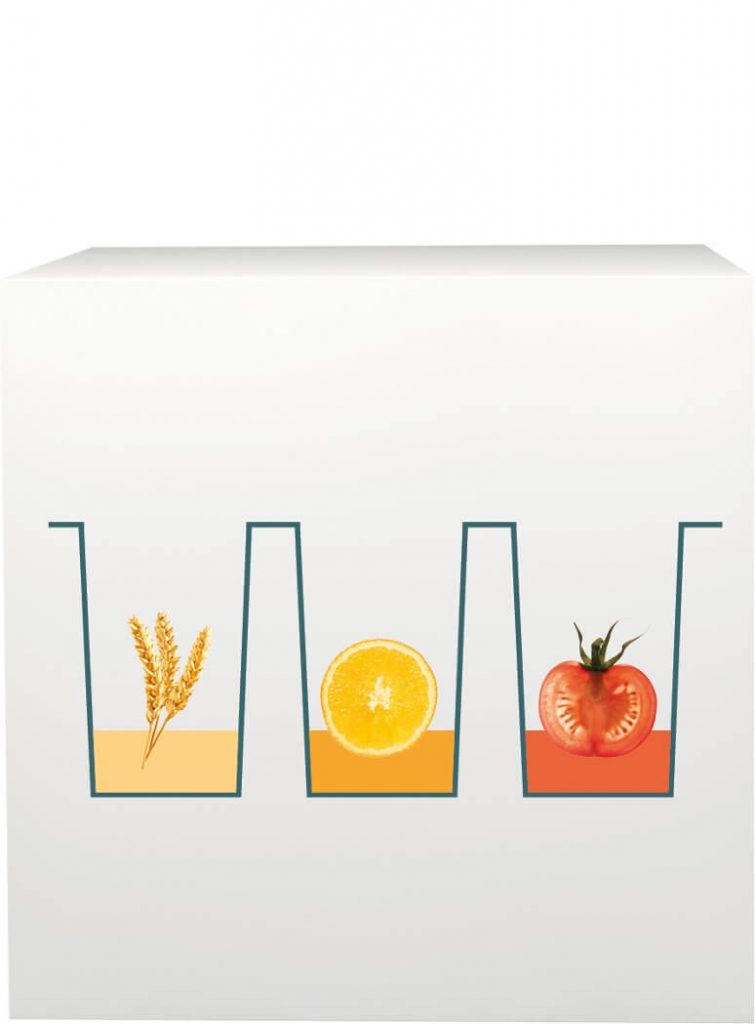
Pipetting of patient’s sample
The serum sample containing the IgG antibodies is processed in the laboratory and applied to the entire plate(s), placing a portion into every well.
During a reaction time of 90 minutes the IgG antibodies present in the serum are allowed to bind to the corresponding food antigens (proteins) just like 2 pieces in a jigsaw puzzle. Due to the function of these antibodies they will only bind to their respective counterpart, which enables us to “see” which foodstuff your body produced these antibodies against.
In our example, a large quantity of antibodies were generated against orange proteins, a small quantity of antibodies to wheat proteins and no antibodies against tomato proteins are present in the serum.
The antibodies to wheat bind in the well that contains wheat proteins. Importantly, they bind very strong to the wheat proteins, such that these proteins “capture” the specific antibodies in this particular well. The antibodies to orange cannot bind since they do not fit the wheat proteins and thus they will not be captured in this well.
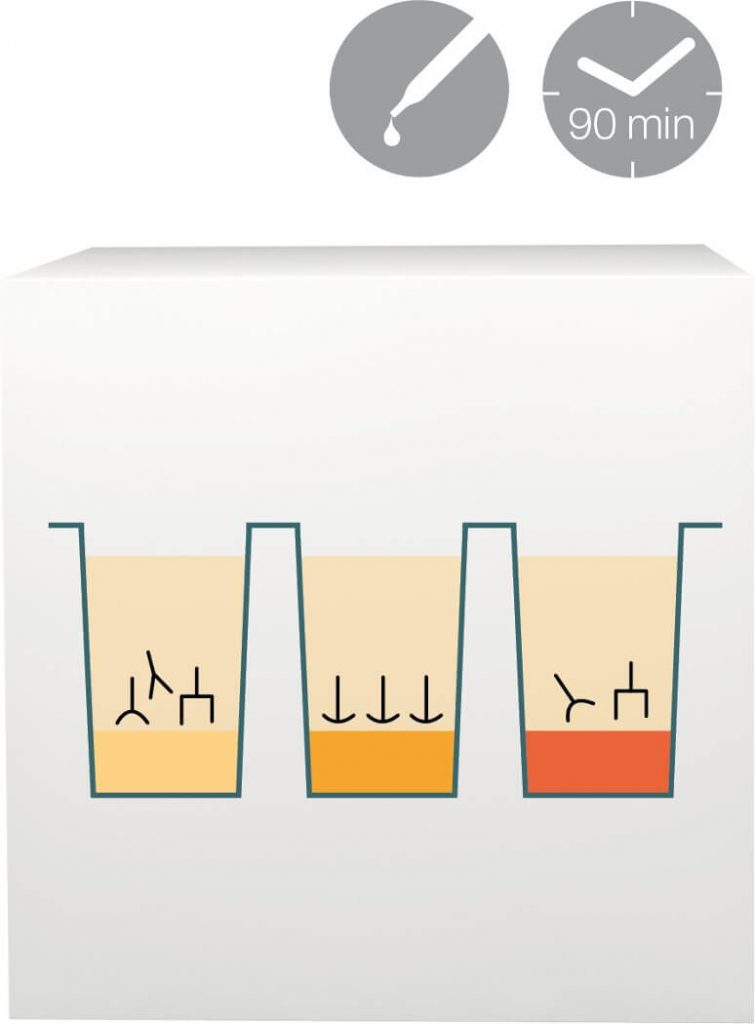
Washing the micro titre plate
In the next step, the plates are washed, i.e. the liquid (serum) is rinsed off the plates. Only the antibodies that have bound to the food proteins (which are captured) remain in the well.
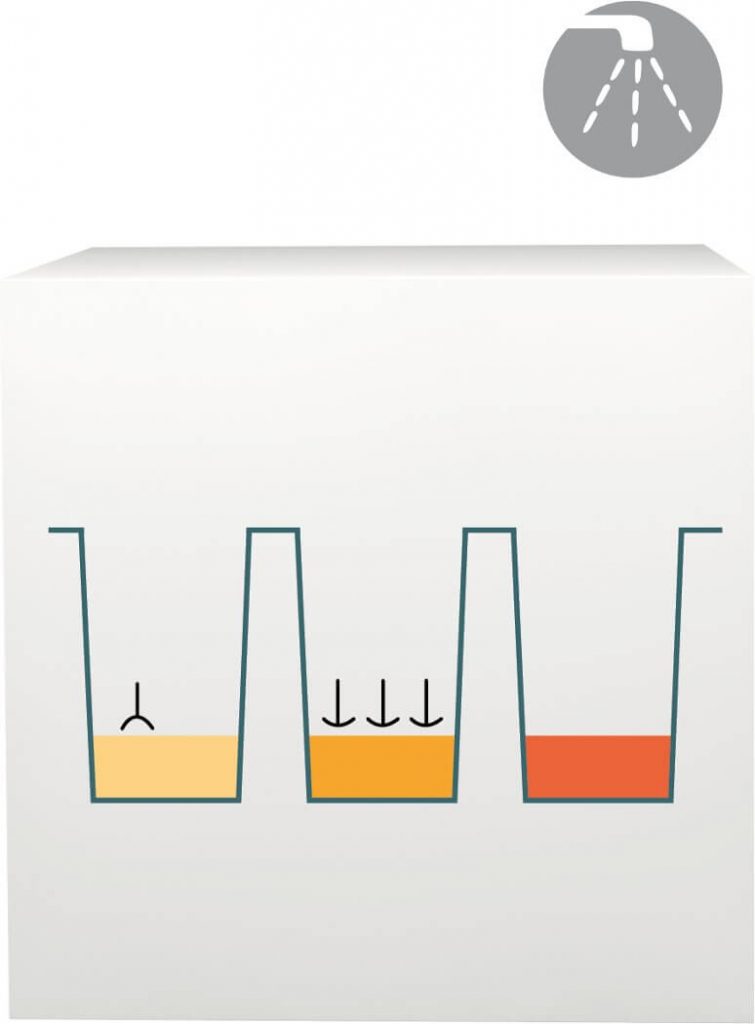
Pipetting of an antibody to IgG
Then, a substance is applied to the plate which enables us to “visualize” the binding of the antibodies: an antibody to IgG.
This second antibody (not to be confused with the antibodies from your sample) will be able to bind to all the IgG antibodies from your sample that were not washed away by the previous washing step. In other words, this antibody will “detect” all the IgG that are binding to the foodstuffs that are in the wells of the plate and that are capturing the IgG from your sample. The special feature of this antibody is that it carries an enzyme that generates a colour reaction. During a reaction time of 90 minutes, the new antibody binds to the ends of the IgG antibodies present.
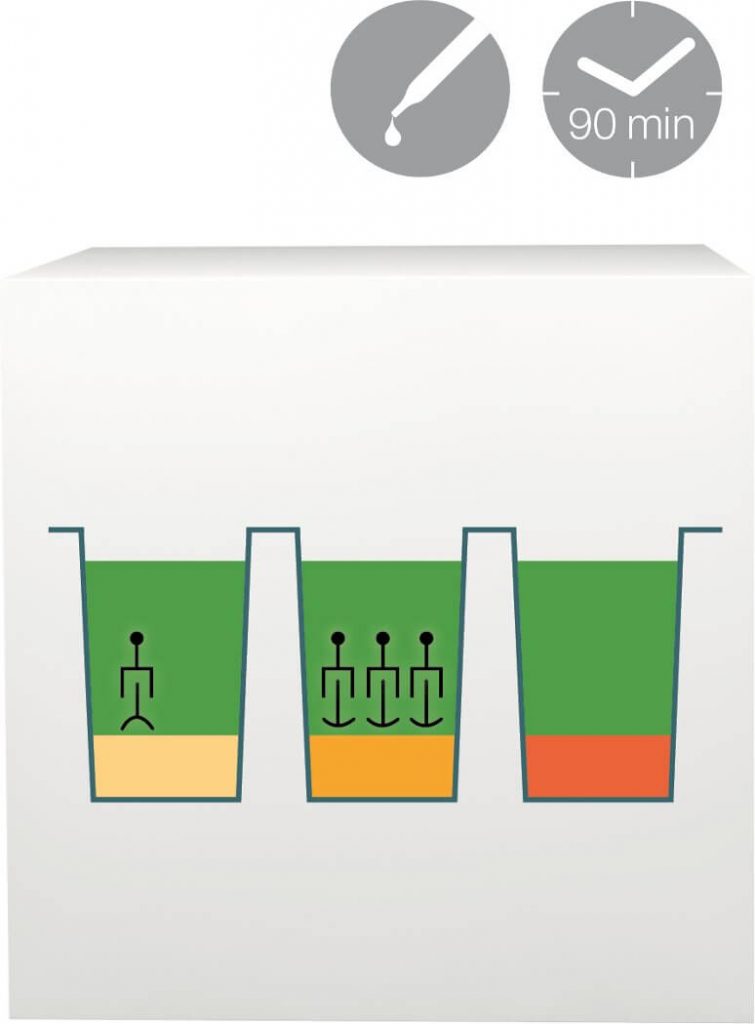
Washing of the micro titre plate
The plate is washed again. Only the antibodies to IgG that have bound to the ends of the IgG antibodies present (the ones that have bound to the food proteins) remain in the well.
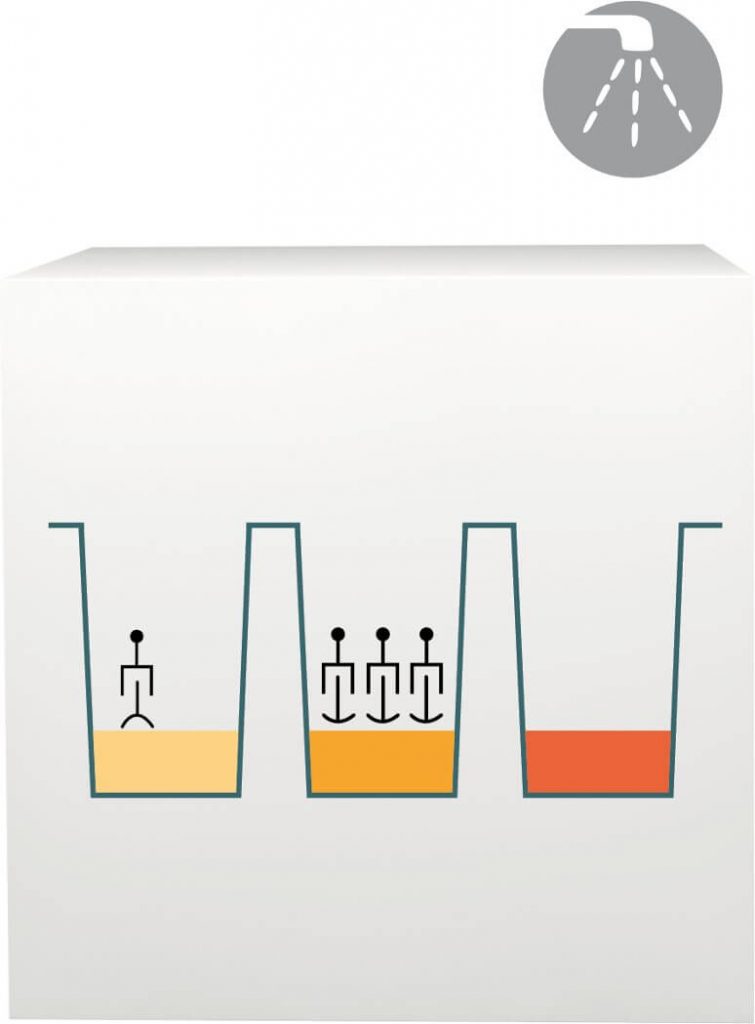
Pipetting of a staining solution – colour reaction
Now, a staining solution is added; this solution is colourless at first.
When antibodies are present, the enzymes trigger a colour reaction during a reaction time of 60 minutes. Depending on the quantity of antibodies in a well, the colour reaction will be more or less intense.
The intensity of this colour reaction is proportional to the quantity of IgG antibodies from your sample – and therefore the amount of IgG antibody titres can be determined.
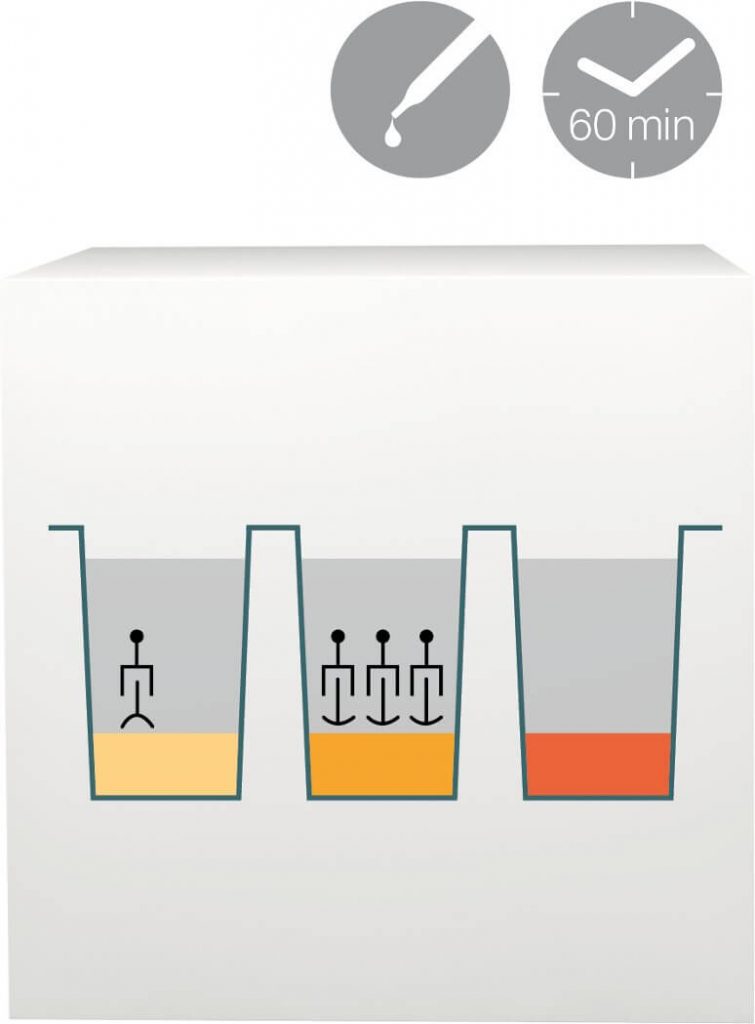
Evaluation and preparation of your personal documents
Finally, the results are evaluated. Based on the results of the antibody titre the foodstuffs are categorised into three groups: “not elevated”, “elevated” and “highly elevated” (except for ImuPro Screen). The lab then prepares and prints your individual documentation of findings.
